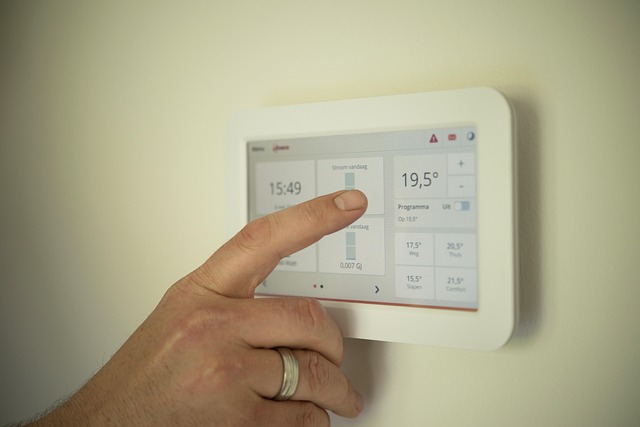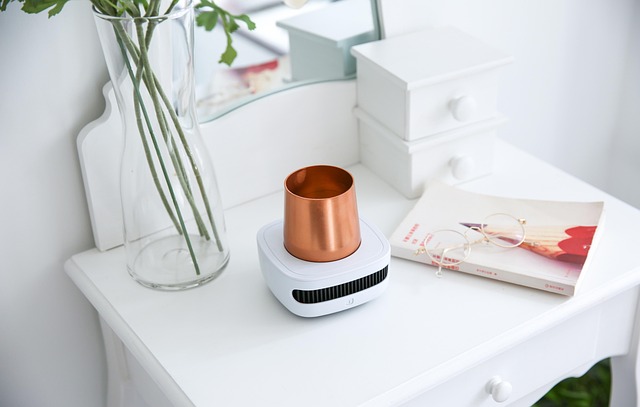Smart thermostats revolutionize home temperature control with learning habits, energy-efficient adjustments, and Wi-Fi integration. Installation is simple, involving removal of old units, mounting new ones, setting up a connection, configuring via apps, and personalizing settings. Top models like Nest and Ecobee offer advanced control, savings, remote access, and compatibility with home automation systems. Energy-efficient algorithms and ENERGY STAR certification ensure performance without sacrificing energy savings. While initial costs are higher, long-term bill reductions make them worthwhile investments. DIY installation is simplified by compatibility with Alexa, Google Home, and Apple HomeKit. Regular maintenance involves firmware updates and battery replacements.
Looking to elevate your home comfort and energy efficiency? Smart thermostats are a game-changer. This guide helps you navigate the world of these advanced devices, offering insights into their benefits, key features, and how they integrate with your home systems. We break down the top models for easy installation and provide setup, cost, and maintenance considerations, ensuring you make an informed decision for optimal smart thermostat installation.
- Understanding Smart Thermostats: Benefits and Basics
- Top Models for Easy Home Installation
- Features to Look Out For: Energy Efficiency
- Compatibility and Integration with Home Systems
- Setup, Cost, and Maintenance Considerations
Understanding Smart Thermostats: Benefits and Basics

Smart thermostats have revolutionized the way we control our home temperatures, offering a convenient and efficient solution for optimizing indoor comfort with technology. These devices go beyond basic temperature regulation by learning your habits, predicting your needs, and automatically adjusting settings to save energy and reduce utility bills. With a simple app or voice command, you can adjust your thermostat from anywhere, ensuring your home stays comfortable without breaking the bank.
Installing a smart thermostat is a straightforward process that typically involves removing the old thermostat and mounting the new one on an interior wall. The step-by-step installation process often includes setting up a Wi-Fi connection, configuring the device through a user-friendly app, and personalizing temperature settings to suit your preferences. Unlike traditional thermostats, smart models can also integrate with other home automation systems, allowing for comprehensive control over lighting, security, and more. Say goodbye to manual adjustments and boiler repairs; with a smart thermostat, you gain control, convenience, and significant energy savings.
Top Models for Easy Home Installation

When it comes to installing a smart thermostat, several top models stand out for their user-friendly design and straightforward setup processes. These devices are designed to seamlessly integrate into your home’s existing HVAC system, offering not just advanced temperature control but also energy savings and remote access through smartphone apps.
Optimizing indoor comfort with technology has never been easier thanks to modern smart thermostats. Models like Nest Learning Thermostat and Ecobee SmartThermostat are renowned for their intuitive interfaces and guided installation processes. These include detailed instructions, step-by-step video tutorials, and even companion apps that walk you through the entire smart thermostat installation checklist. With these top choices, you can transform your home’s temperature control while enjoying enhanced efficiency and comfort.
Features to Look Out For: Energy Efficiency

When considering a smart thermostat for your home installation, energy efficiency should be top of mind. Look for models that boast advanced heating and cooling algorithms designed to optimize temperature control while minimizing energy consumption. These thermostats learn your habits and adjust settings automatically, reducing energy waste and lowering utility bills. Many modern smart thermostats also offer features like remote access via mobile apps, allowing you to synergize the device with other IoT devices for a more connected home experience.
Additionally, check for certification by reputable energy-efficiency standards, such as ENERGY STAR. This ensures that the thermostat meets specific criteria for saving energy without compromising performance. While initial costs might be higher than traditional thermostats, the long-term savings on your energy bills make them a smart investment. Remember to consult with professional HVAC installers near me for expert advice and safe installation, ensuring optimal performance and comfort in your home.
Compatibility and Integration with Home Systems

When considering a smart thermostat installation, it’s crucial to assess compatibility and integration capabilities with your existing home systems. The best practices for smart thermostat setup involve seamless communication between your new device and other smart home components like lighting, security systems, and even solar panels if you have them installed. This integrated approach allows for enhanced control and energy efficiency.
DIY smart home upgrades for homeowners are made easier by modern smart thermostats designed to work with popular home automation platforms such as Amazon Alexa, Google Home, and Apple HomeKit. For those renting or living in apartments, a smart thermostat can be a game-changer, offering remote access and control over temperature settings, which is particularly beneficial when managing energy usage while away from home.
Setup, Cost, and Maintenance Considerations

Setting up a smart thermostat is relatively straightforward, with most models offering simple plug-and-play installation. Many modern thermostats are designed to be user-friendly, featuring intuitive interfaces and companion apps for remote control and monitoring. However, the initial cost can vary widely depending on brand, features, and connectivity options. Smart heating and cooling solutions range from affordable entry-level models to premium options with advanced capabilities like voice control and integration with home security systems.
Regular maintenance is minimal but crucial for optimal performance. This includes occasional firmware updates and battery replacements, typically every one to two years. Troubleshooting common smart thermostat problems usually involves checking internet connectivity, ensuring proper placement (away from direct sunlight or large appliances), and verifying that the device is receiving power. By addressing these setup, cost, and maintenance considerations, homeowners can resolve smart temperature control issues at home efficiently and enjoy the benefits of modern, connected comfort.
When considering a smart thermostat installation for your home, it’s evident that these devices offer a wide array of benefits. From enhanced energy efficiency to seamless integration with existing home systems, top models like those discussed in this article provide an easy and cost-effective solution for comfortable and sustainable living. By investing in one of these advanced thermostats, you’re taking a step towards a smarter, more efficient home while enjoying the peace of mind that comes with precise temperature control.
